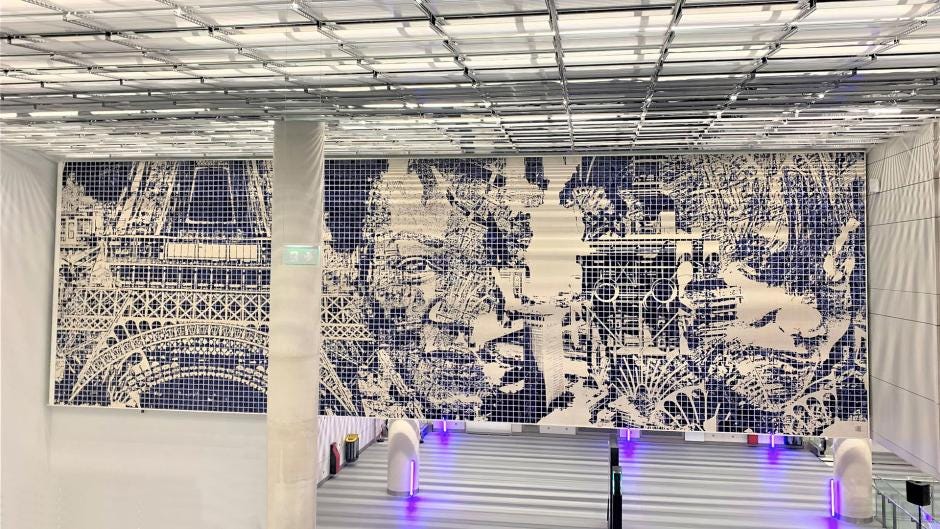The Grand Paris Express Megaproject
Will the Grand Paris Express megaproject make Paris a megacity?
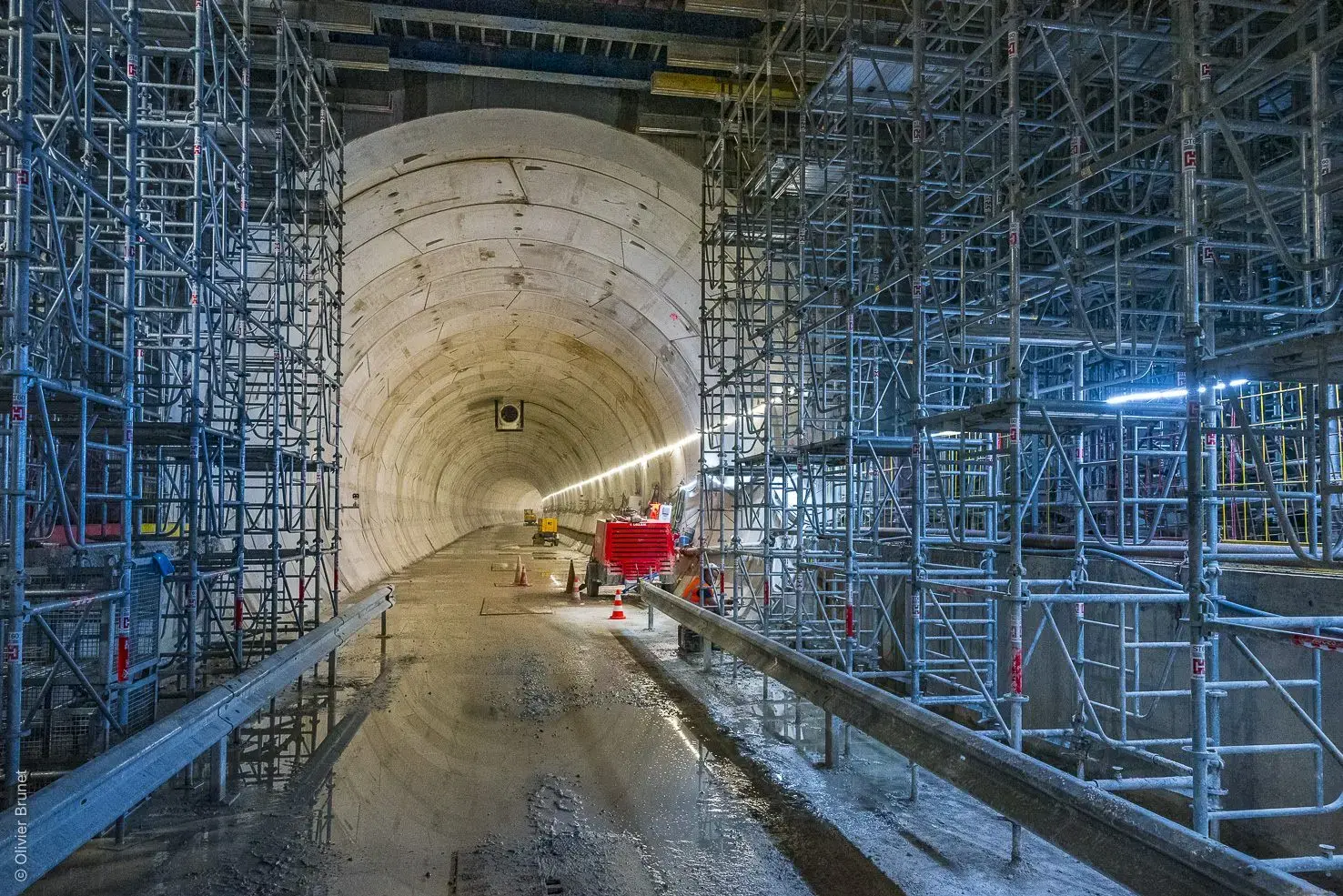
This week, we're exploring the largest urban transport project in Europe: the Grand Paris Express.
This €42 billion megaproject promises to connect Paris's sprawling suburbs to each other — without requiring passengers to travel through the congested city center.
This promises to transform mobility. But will it transform the city itself?
Let's dive in.
A new metro for Paris
Visitors to Paris might wonder why it needs a new metro system. The metro system within the municipal borders of Paris is already the second busiest in Europe.
The problem is that the municipal borders of Paris are a mere 100 km2 — compared to 1600 km2 for London. While there are 2 million people living inside these borders, an extra 11 million live in the surrounding metropolitan area.
And for these Parisians, getting around can be a nightmare. Commuting to work in the city can require multiple modes of transportation, with commutes of ninety minutes each way not uncommon.
For those looking to travel to another suburb, the situation is even worse. The current Paris transport network follows a hub-and-spoke model, which forces travelers to go through central Paris even when their destination is a neighbouring suburb.
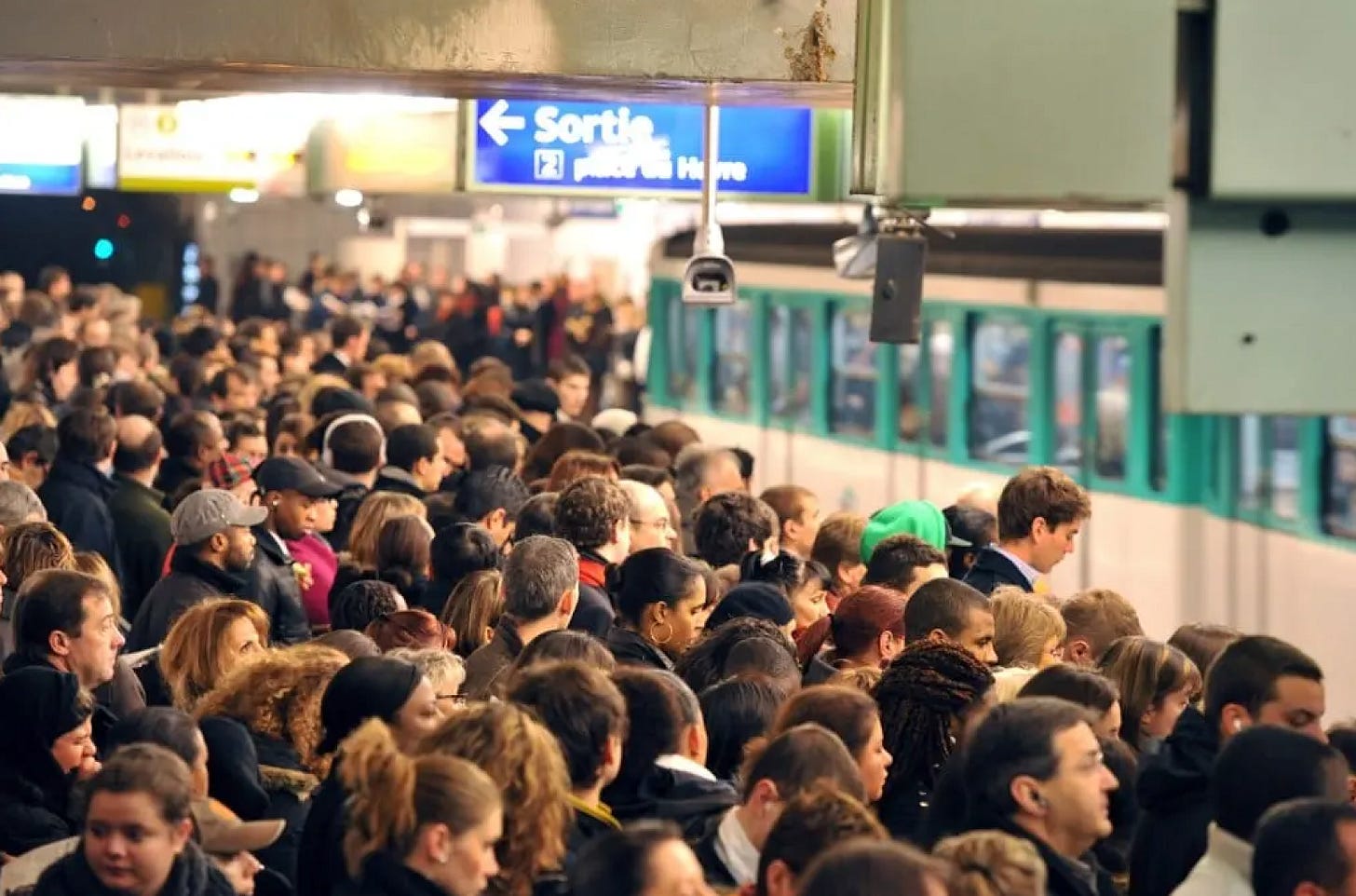
The scope of the Grand Paris Express
The Grand Paris Express is looking to transform this hub and spoke model by building a series of metro lines connecting the greater Paris region. The goal of the new metro lines is to create a 20 minute city — not just for municipal Paris, but the entirety of ‘Grand Paris.’
When finished, the project will have built 68 new stations and 200 kilometers of additional tracks.
The full network will include:
- Line 14 extension: 14km connecting Orly Airport to Saint-Denis Pleyel (partial sections operational)
- Line 15: A 75km circular line around Paris (South section partially open)
- Line 16: A 29km line serving eastern and northeastern suburbs (under construction)
- Line 17: A 27km line connecting major airports to Saint-Denis (partial opening)
- Line 18: A 35km line linking scientific and educational centers (under construction)
Construction began in 2015, with the full network now expected to be completed between 2030 and 2032. As of early 2025, several key segments are operational, including portions of Line 14 and sections of Line 15 South.
The initial budget of €18.3 billion has now reached approximately €42 billion—more than double the original estimate.
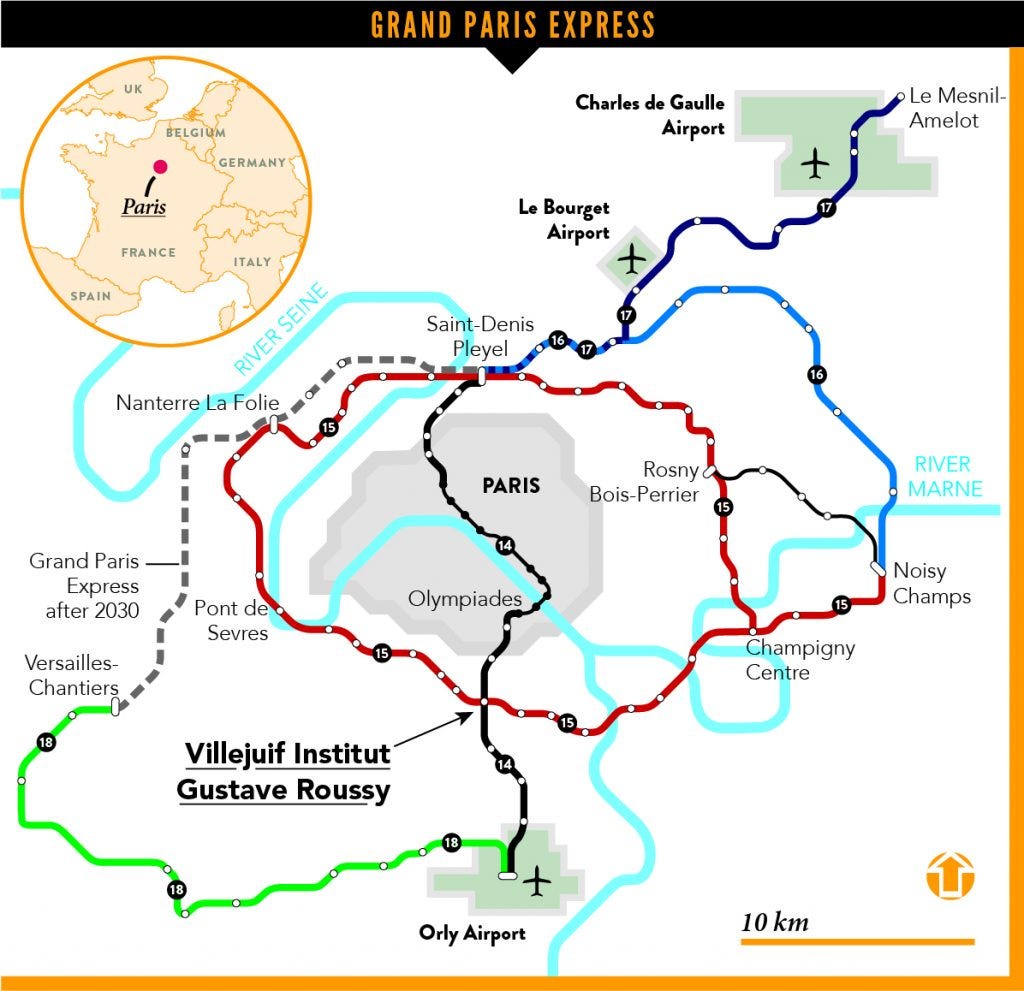
The social drivers of better transportation
Proponents of the project regularly tout increased productivity from reduced commutes. But the other major driver for the project is to connect disadvantaged neighborhoods to the rest of Paris.
Several stations serve historically disadvantaged neighborhoods like Clichy-Montfermeil, areas that have long suffered from poor transport connections.
Studies suggest that this will see the number of jobs accessible within a 45-minute commute from specific stations increase by over 300,000, potentially transforming opportunities for residents.
The shifting size of work packages
The Société du Grand Paris — the contracting authority for the Grand Paris Express — has experimented with package size and scope over the course of the project.
Building up to the project’s peak in 2021 — when work on all four lines, plus 30 stations, was being undertaken at once — the team initially broke work into smaller packages so more contractors could participate.
This was to address a potential worry that the scope of the project would saturate the market.
But as GE Plus reports in a discussion with Société du Grand Paris director Bernard Cathelain, this created a different problem of coordination.
The larger number of station fit out packages increased the number of interfaces between disciplines creating overlaps and congestion on site. This put pressure on costs and schedules.
“The lessons we took from Line 15 South was that there were a lot of interfaces – lots of work which was divided up and which needed coordinating and there were real difficulties when we were doing the work,” Cathelain explains.
Major French construction firms including Vinci, Eiffage, and Bouygues have secured significant portions of the work, often forming consortia to tackle complex sections.
Notable contract awards include:
- A Vinci-led consortium's €1.7 billion contract for the southern section of Line 15
- Eiffage's €1.1 billion contract (with partners) for part of Line 16
- Bouygues leading construction on multiple sections, including parts of Line 14
Tunnels, tunnels, and more tunnels
Nearly all of the Grand Paris Express is tunnels. At its peak, the project had over 20 tunnel boring machines (TBMs) operating simultaneously—a record for a single European project.
These massive machines, each costing approximately €20 million and stretching up to 100 meters, navigate numerous challenges beneath Paris, including complex geology, crossing beneath the Seine and Marne rivers, and navigating around existing infrastructure.
To prevent disruption in densely populated areas, the tunneling teams even froze the soil.
As of 2025, over 75% of the tunneling work is complete, with the remaining sections presenting some of the most challenging geological conditions.
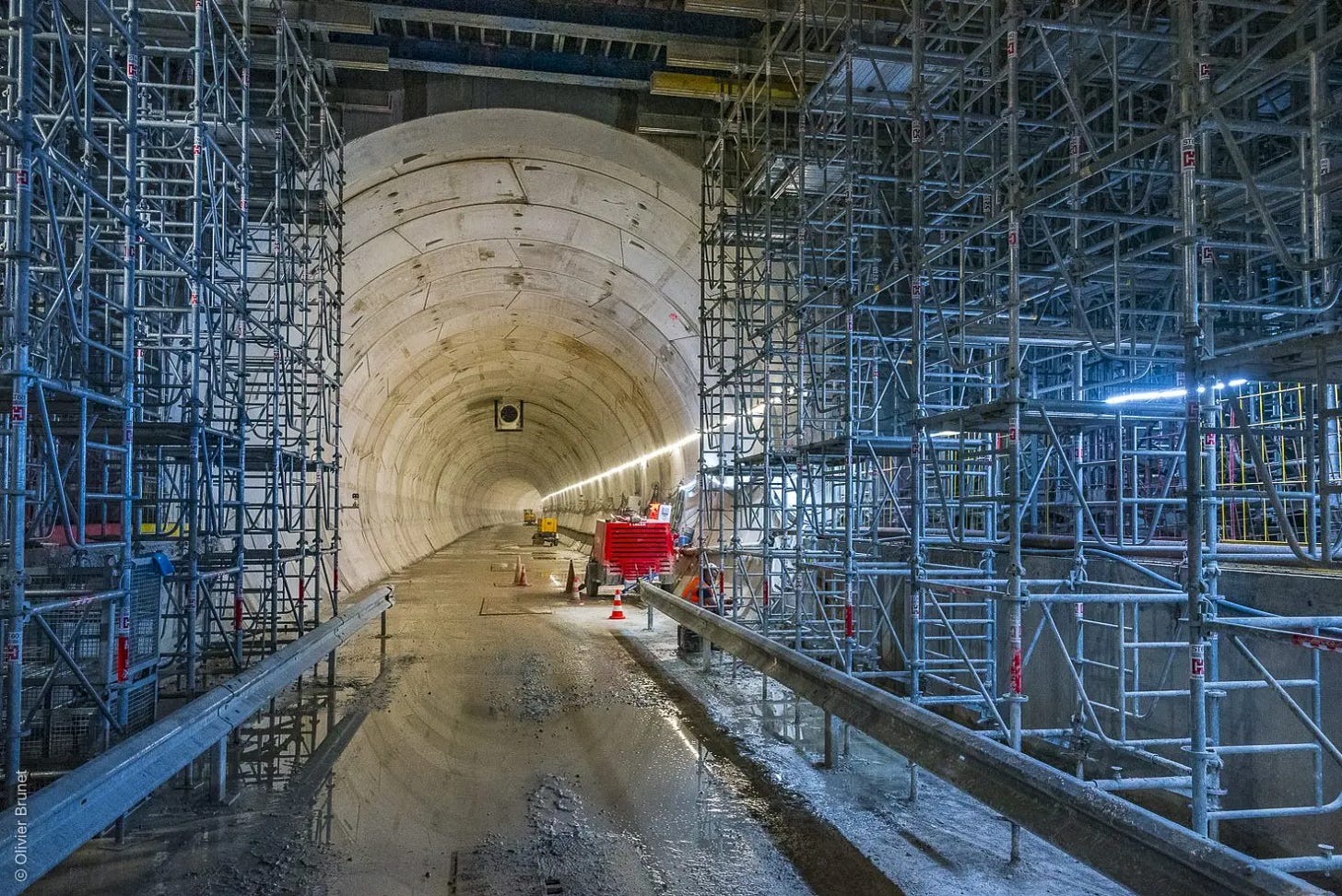
Station architecture
As you would expect in a Parisian project, the 68 new stations aren't merely transport hubs—they're works of art.
The Villejuif-Gustave Roussy station, for example, features a dramatic conical atrium bringing natural light deep underground while creating visual connections between different levels.
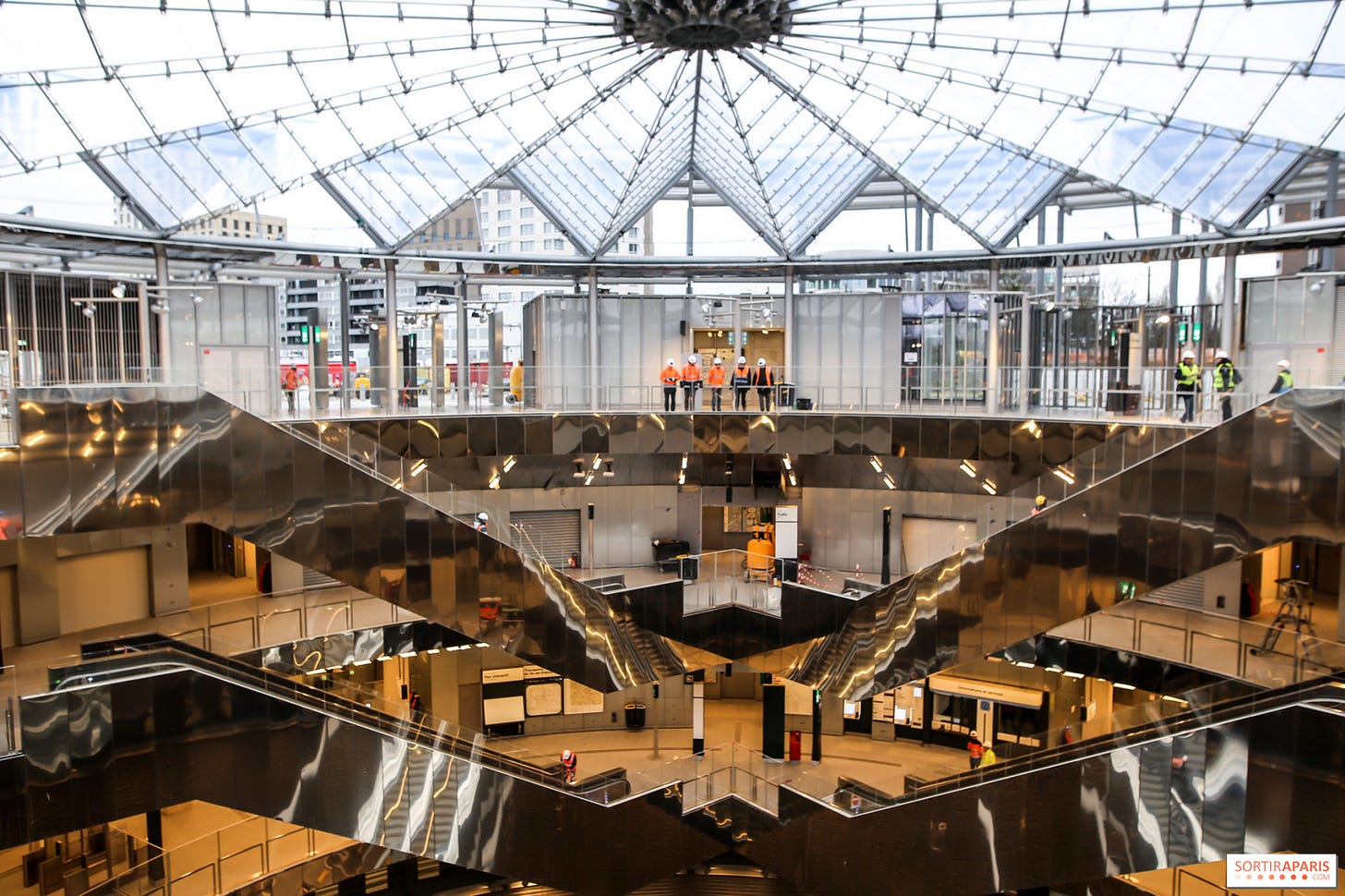
The project also pairs each station with an artist to create site-specific works reflecting local heritage.
At Orly Airport station, for example, Alexandre Farto (known as Vhils) has created ‘Strates Urbaines’, a mural of more than 11,000 Portuguese ceramic tiles called azulejos.
